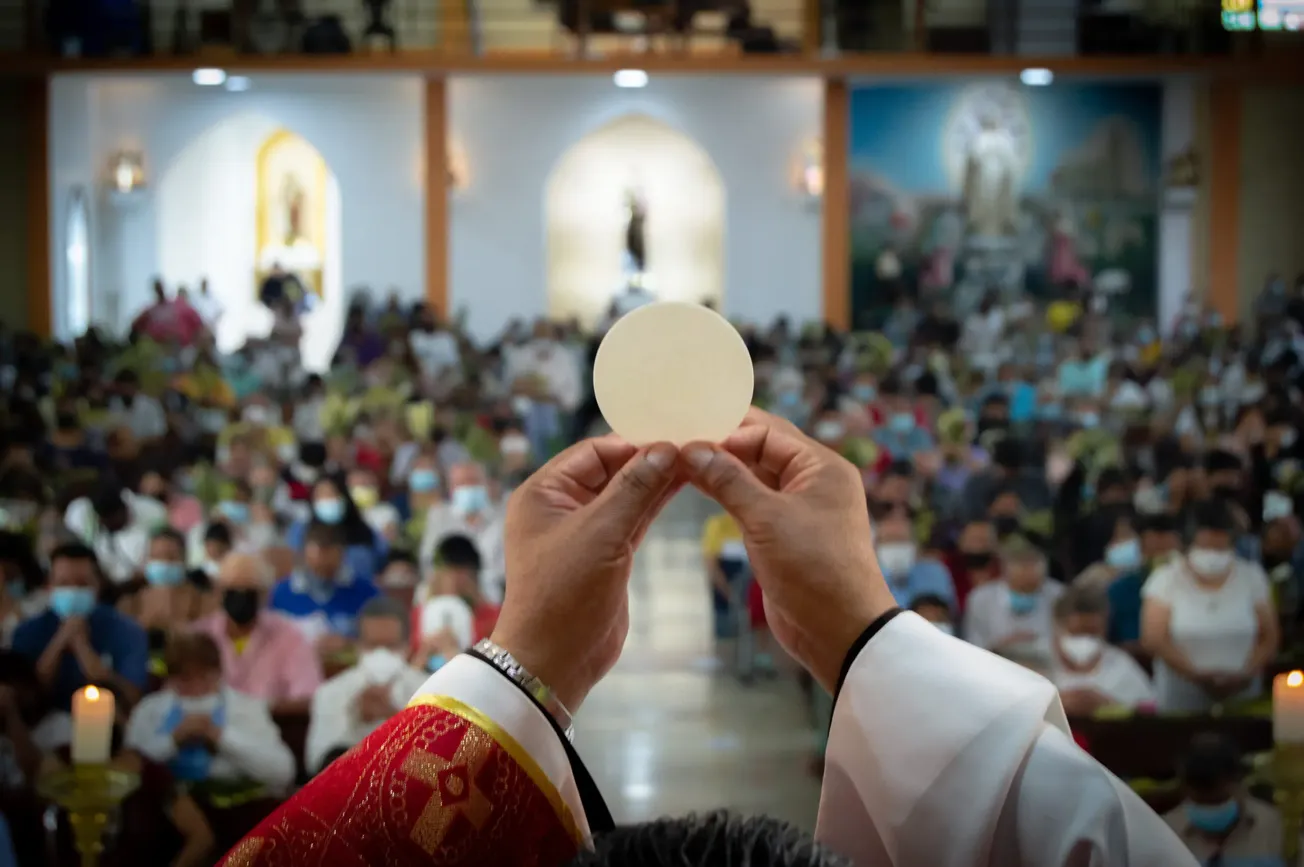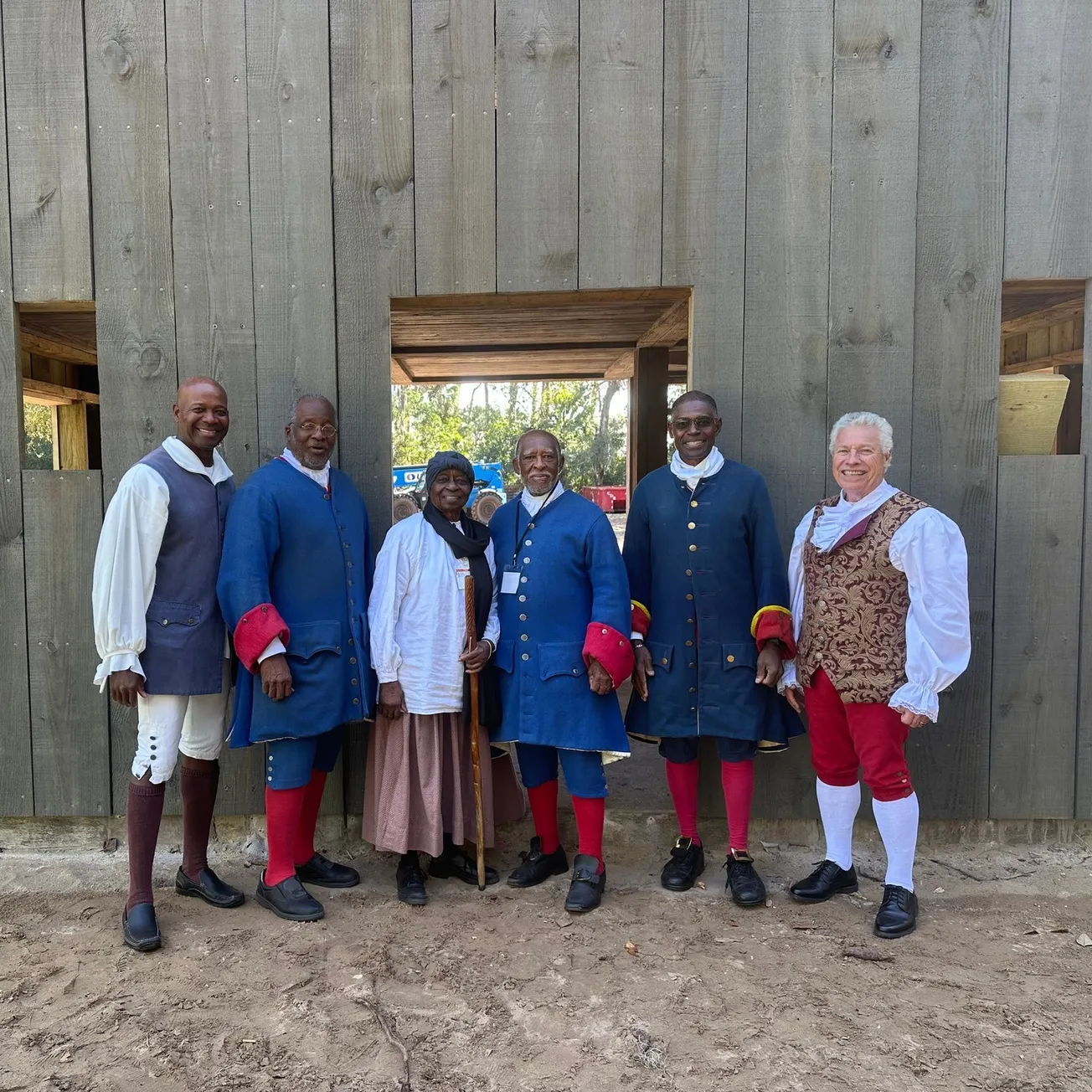Should the United States change the way George Washington is perceived by transforming the majority of his images into that of a Black man? No, because it would be historically inaccurate, and change his identity as well as America’s. By the same token, all denominations of Christianity should cease portraying Jesus Christ as a White man, because it is historically inaccurate, gives the idea that the church is exclusive, and perpetuates White Supremacy.
The reason why Jesus is shown as a White man is a result of White Supremacy. This damages the Church’s image because it gives off the idea that “White is right”—and that is why Catholicism stays predominantly White in America. Research has shown that 59% of American Catholics are White, 34% are Hispanic, and Asians and Blacks together make up 6%.
Consider, however, that even though Jesus’ physical appearance is not mentioned much in the Bible, when he is described, there is a common theme of bronze skin. St John the Apostle describes Christ in his apocalyptic vision like so:
“His head and his hair were white like wool, as white as snow. And his eyes were like flames of fire. His feet were like polished bronze refined in a furnace, and his voice thundered like mighty ocean waves.”
(Rev. 1:14-15)
Again, in Ezekiel 40:3, the prophet mentions that the Son of Man, who Catholics and many other Christians believe to be Jesus, “had an appearance of bronze.” This hue is also mentioned in the book of Daniel, where he describes Jesus’s body as like topaz with a gleam of bronze. This is important; Christ’s color has been made known since the beginning of Jewish history.
Also mentioned in the Bible is the genealogy of Christ, mentioned in the New Testament twice. The first time, it has the ancestors of Joseph, his adopted father, and the second has a mixture of both Joseph and Mary, his biological mother. Many of his ancestors are mentioned in the Old Testament and their backgrounds can be traced. Christ’s genealogy has many ties to Africa and the Middle East. In Luke 3:23-38, the evangelist writes of the ancestors of Christ, from Joseph all the way to God himself. Matthew 1:17 mentions the genealogy of Joseph, which has many influential people from the Old Testament. Some of the recognizable people from the Old Testament include David and Abraham.
Many people have done extensive research pertaining to the images of Christ. For example, Keri L. Day, professor of constructive theology and African American religion at Princeton, emphasizes that one has to remember that Jesus was a Jewish man and during that time they were nomadic. Many of the diasporas of the time were Afro-Asiatic and diverse. Day says that “this shows Jesus’ background, but in modern terms he was a person of color.”
Another woman who has done research about Christ’s image is Dr. Joan E. Taylor, a religious historian and author who wrote a book called “What Did Jesus Really Look Like?” Her analysis gives some scientific clues about Christ's appearance. She says Jesus was about 5 feet 5 inches tall, the average height seen in the skeletal remains there at the time. Her research also mentions that people of Judea and Egypt often had brown eyes, black hair, and olive-brown skin.
Iconography of Jesus also has an impact on the Church’s history and environment, as seen in the National Catholic Reporter’s 2020 editorial “Why White Jesus Is a Problem.” They mention the importance of symbols and how, if White Catholics are only exposed to a White Jesus, it will influence how they treat their non-White neighbors. This kind of exposure will only build up the idea that the White race is superior.
Many White groups use Jesus as a tool for power and oppression, and White Jesus narrows the understanding of him. It sends the message that he relates to the powerful instead of the oppressed. Time and time again, Jesus Christ mentions that he relates and focuses on the oppressed like the poor, the sick, and the 1st-century Jewish people. How can Jesus care and really understand the persecuted if he relates with the oppressors and teaches oppression and that one race of humans is superior?
The history of iconography gives some context on why modern icons of Jesus look the way they do. One of the earliest extant images of Christ was painted in 235 AD in Syria. It showed a common image of Christ, depicting him as “The Good Shepherd”—a young, brown, short-haired, beardless man, with a lamb on his shoulder. How did the image of Christ change so drastically?
The long-haired, bearded image of Christ emerged towards the beginning of the 4th century AD. It was influenced by the image of Greek and Roman gods, particularly the god Zeus/Jupiter. The image of Christ was changed to appeal to the Romans so that more could convert. It has stayed that way throughout time, from the Renaissance even to today in modern images and cinematography.
Unfortunately, White Supremacy has had a root in the Church's history and culture. The Protestant Church, for example, was often used to justify racist actions. The Klu Klux Klan is just one example. If Jesus was White, so they thought, they could use him as a symbol of their work. A major reason why Jesus was whitewashed was that non-White people were dehumanized and Jesus was the complete opposite.
Another example of the Church justifying racism is the life of Venerable Augustus Tolton, the first openly African-American priest in the Catholic Church. Tolton was born a slave in Missouri and was able to escape to the free state of Illinois. In his youth, he attended the all-White St. Boniface Parish School. His attendance there caused an outcry from parents, students, and other parishioners. It escalated to the point where he had to go to school after hours so he could be safe, but eventually he was withdrawn from the school.
Nevertheless, Tolton was highly devoted to the faith and realized he wanted to become a priest. He applied to many seminaries around the country, but every single one denied him. In order to follow his dream, he had to go all the way to Rome to study. He became a priest there and was assigned back to Quincy, Illinois. He again received many threats from the Catholics of Quincy and even other priests. One priest specifically urged White Catholics not to attend Tolton’s parish. Augustus was persecuted so badly that he eventually accepted an invitation to move to Chicago.
Throughout his life, racism—which is completely against Catholic teachings—was justified by White Americans to create and foster anti-Black sentiment and pro-White superiority and supremacy.
These ideologies still have a negative impact on the Church now. As the Black Catholic historian Dr. Anthea Butler rightly said, “If Jesus is White and God is White… then authority is White.” So many of the authority figures in Christianity, and more specifically the Catholic Church, are White. Research shows that out of the 260 popes, 196 have been from Italy. Moreover, in the United States, there are only eight active Black Catholic bishops. This can give the idea that Jesus left White people in charge, which is completely invalid.
“The message of Jesus is a unifying message. According to Ephesians 2, he tears down every dividing wall of hostility through his death on the cross. I think we’ve done a poor job of showing the world that, because we’ve been so segregated.”
(Terrance Jones)
There is so much division in the Church and the majority of it is unnecessary. Hopefully, in the future the Church can be unified universally. For now, there is still the argument that leaving Jesus the way he is in most churches would be fine. Why create so much change? Changing the image of Christ is too much effort and will cause so much outcry, some might say. In order to improve, though, everyone always needs to do hard work.
The change would cause controversy, yes, but it will always be worth it because it will help Christianity be more inclusive. Many other Non-white cultures depict Jesus Christ as one of their own. Why is it permissible for them but not for those of European descent? A good example is Ethiopian Christianity. Catholic and Orthodox Christians in that patrimony have a very unique style when it comes to Christian icons, and most of their churches don’t show artwork outside of their style. More specifically, they exclusively show Jesus as a person of color.
Representing Christ as the majority of local groups helps humans relate to and understand him more. In the case of Europeans, though, it has become an excess. When something is shown in one way only, even outside of the proper context, it gives the idea that only that way is right—especially when it deals with race. If Christ is mostly shown as one race, it implies that He relates with that race more.
In short, the Church needs to stop exclusively depicting Jesus Christ as a White man. It is hurtful in many ways because it promotes White Supremacy, is historically unreliable, and perpetuates segregation. Images are extremely important. If something is portrayed inflexibly, it will indoctrinate the population. Christ has been shown as a White man everywhere and it has brainwashed American society to think that White is superior—and that Jesus associates with the oppressors instead of the oppressed.
Ashley Paul is a student in Colorado and will be graduating from high school in 2023. She is passionate about diversity and activism, and focuses on representation from many perspectives, including religion. She hopes to further pursue this in the future.










